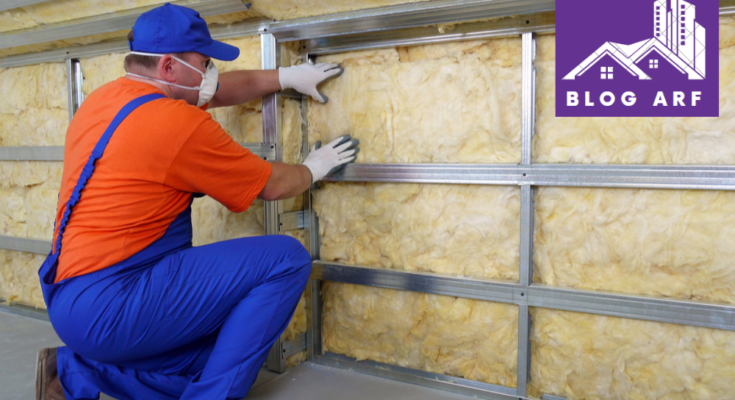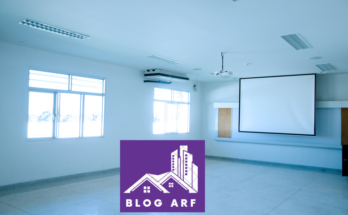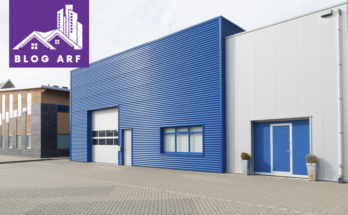Do you want to make your metal building more comfortable and use less energy? Want to know how to properly insulate a metal building that is already there? You are in right spot.
How to insulate an existing metal building? Insulating a metal building is important for keeping it at a comfortable temperature all year and saving money on energy costs.
We shall show you step-by-step how to insulate an old metal building in this guide. We can help you with everything from learning about different types of insulation to choosing best materials for your needs.
First, let’s talk about why it is important to insulate your metal house. People know that metal buildings can get very hot or very cold inside, which can make people unhappy.
By sealing your building, you can stop heat from moving inside, which will keep it cool in summer and warm in winter.

We will talk about different types of insulation that can be used in metal buildings. These include reflecting insulation how to insulate an existing metal building?, fiberglass, and spray foam.
Each material has pros and cons that you should think about, and we’ll help you pick best one for your job.
Once you have chosen insulation material, we will walk you through construction process and give you tips and tricks to make sure job goes smoothly and effectively.
We will go over steps you need to take to get best results whether you’re insulating walls, roof, or base of your metal building.
We shall also talk about how important it is to seal your enclosed metal building properly and keep damp out so that condensation and mold do not grow inside.
You will know how to successfully insulate your current metal building by end of this guide. This will make it more comfortable, save you money on energy costs, and last longer overall. Let’s learn more about metal building insulation and make our place more comfy and better for environment
What are different insulation options available for metal buildings?
You can choose from a number of different ways to insulate metal house how to insulate an existing metal building? in s. Fiberglass insulation is a common choice because it is cheap and easy to put in.
Spray foam insulation is another choice. It is known for having a high R-value and being very good at closing.
People also like reflective insulation, which is made of foil-faced materials and keeps heat out of building.
There are pros and cons to each type of insulation, so it’s important to carefully consider your choices to find best one for your needs.
How to Insulate an Existing Metal Building? Fiberglass, Spray Foam & Reflective Options
Fiberglass Insulation:
- Fiberglass insulation is a popular choice for insulating metal buildings.
- It consists of fine glass fibers tightly packed together, providing thermal resistance.
- This type of insulation is affordable and readily available in various forms, such as batts and rolls.
- Installation of fiberglass insulation is relatively straightforward and can be done by DIY enthusiasts.
- It offers how to insulate an existing metal building? decent insulation properties and can help regulate indoor temperatures effectively.
- However, fiberglass insulation may require additional protective gear during installation due to its small glass fibers.
- It’s essential to ensure proper sealing and coverage to prevent air leaks and maximize insulation performance.
- Overall, fiberglass insulation is a cost-effective option for insulating metal buildings.

Spray Foam Insulation:
- Spray foam insulation is known for its excellent sealing capabilities and high R-value.
- It is applied as a liquid and expands to fill gaps and crevices, creating a seamless barrier.
- This type of insulation provides superior thermal performance and can help reduce energy costs.
- Spray foam how to insulate an existing metal building? insulation adheres well to metal surfaces, ensuring a tight seal and minimizing air infiltration.
- Professional installation is recommended for spray foam insulation to ensure proper application and safety.
- While more expensive than other insulation options, spray foam offers long-term energy savings and improved comfort.
- It is essential to consider the expansion properties of spray foam and allow for adequate curing time before occupancy.
- Overall, spray foam insulation is a premium choice for insulating metal buildings, offering superior performance and durability.
Reflective Insulation in How to Insulate an Existing Metal Building?
- Reflective insulation is made of foil-faced materials designed to reflect radiant heat.
- It is typically installed in walls, roof, or how to insulate an existing metal building? attic of metal buildings to reduce heat transfer.
- Reflective insulation works by reflecting heat away from building, helping to maintain comfortable indoor temperatures.
- This type of insulation is lightweight, easy to handle, and can be installed with minimal tools.
- Reflective insulation is particularly effective in hot climates where reducing radiant heat gain is essential.
- However, it may not provide as much insulation in colder climates where heat retention is a priority.
- It is crucial how to insulate an existing metal building? to install reflective insulation with an air gap to maximize its reflective properties.
- Overall, reflective insulation is a practical option for controlling heat gain and improving energy efficiency in metal buildings.

How to Insulate an Existing Metal Building? Fiberglass, Spray Foam & Reflective Options Explained
Why Insulation Is Important:
- Insulating how to insulate an existing metal building? an old metal building is necessary to keep temperature inside comfortable.
- Good insulation helps control flow of heat, which keeps building cool in summer and warm in winter.
- Insulation also saves money on energy costs by lowering need for heating and cooling.
- It protects against things like heat, cold, and wetness that come from outside.
- Insulation makes a building more how to insulate an existing metal building? comfortable and productive generally.
- You can make house last longer and use less energy by protecting it.
- Realizing how important insulation is is first thing that can be done to make a building more comfortable and save money.
How to Insulate an Existing Metal Building? Insulation You Need:
It is important to figure out how much insulation an old metal building needs before you start covering it.
- Do a full check to find places where how to insulate an existing metal building? heat is escaping or air is getting in.
- When figuring out how much insulation a building needs, you should think about things like its size, location, and temperature.
- Check state of any insulation that is already there and decide if it needs to be replaced or if more insulation is needed.
- Find any holes or weak spots in padding that might need extra attention.
- Figuring out how much insulation you need helps you make a plan that will work best for your home.
- It makes sure that you insulate all places that need it to get best thermal performance.
Right Insulation Material:
Picking right insulation material is very important if you want to get results you want.
- Think about things like R-value of insulation, how long it will last, and whether it will work with metal surfaces.
- Fiberglass, spray foam, and mirrored how to insulate an existing metal building? insulation are all common types of insulation for metal buildings.
- Think about pros and cons of each type of insulation based on your needs.
- You should choose a material that is best balance of heat efficiency and cost.
- Talk to insulation experts or sellers to find out which material will work best for your job.
- By choosing right insulation material, you can keep your building comfortable and save money on energy costs over time.
Insulation in How to Insulate an Existing Metal Building?
The insulation installation process must be carefully planned in order to go smoothly.
- Make a specific insulation plan that includes work that needs to be done supplies that will be needed, and a schedule.
- Think about things like how easy it how to insulate an existing metal building? will be to get to building, weather, and safety measures that need to be taken during installation.
- Figure out best order to place insulation for maximum speed and effectiveness.
- Make a plan for any prep work that needs to be done, like cleaning surfaces or fixing wiring that is broken.
- Work with workers or insulation experts to make sure plan goes off without a hitch.
- Planning ahead for insulation installation helps keep things running smoothly and guarantees good results.
Building Ready for Insulation in How to Insulate an Existing Metal Building?
Fix any problems or issues that are already there in building before you put in insulation.
- Clean surfaces to get rid of dust, dirt, and other things that could get in way of insulation’s bonding or function.
- Fix any insulation, locks, or structure parts that are broken to make sure building is airtight and stable.
- Fill in any holes, cracks, or gaps that could let air or water in.
- To stop mist and mold growth, you might want to add air screens or moisture control measures.
- Plan out building’s plan and entry places so that installing insulation goes smoothly.
- Setting up building correctly is first step to a good insulation job, and it also guarantees long-term performance.
Putting in Insulation in How to Insulate an Existing Metal Building?
Once building is ready, how to insulate an existing metal building? work through planned order of steps to put insulation.
- When putting chosen insulation material, make sure you follow manufacturer’s instructions and best practices.
- Use right safety gear and methods to keep yourself safe during installation.
- Make sure there is full covering and good closing to keep air and heat from leaking out.
- When putting padding around corners, edges, and holes, pay close attention to little things.
- For big or complicated jobs, you might want to hire insulation experts with a lot of experience.
- For building to be as energy efficient and comfortable as possible, insulation must be installed correctly.

Sealing and Finishing for How to Insulate an Existing Metal Building?
Once insulation is in place, make sure there are no more holes or joints by sealing them.
- To close gaps, joints, and holes in insulation, use sealer or tapes that are suitable.
- Look over insulation to how to insulate an existing metal building? see if there are any spots that need more covering or support.
- You might want to add insulation covers or dividers to keep things safe and make them look better.
- Finish off any loose ends, like cutting away extra insulation or putting on protective coats.
- Do one last check to make sure insulation is still in good shape and working properly.
- Sealing and ending insulation system correctly will make sure it works well and stays intact over time.
Maintenance and monitoring
Once the insulation is installed, keep an eye on how building is doing to make sure it’s working at its best.
- Check insulation on a regular basis for signs of damage, wear, or poor performance.
- Take care of any problems right away to avoid losing energy or having comfort issues.
- Make sure there is enough air flow and moisture control to avoid problems with mold or wetness.
- You might want to do regular energy tests to see how well your insulation is working and find places where it could be better.
- Do upkeep work yourself to make insulation last longer and save as much energy as possible.
- To keep benefits of insulation going and make sure building works well for a long time, it needs to be inspected and maintained regularly.
Advantages of How to Insulate an Existing Metal Building?
Enhanced Comfort:
Insulating an existing metal building improves indoor comfort by regulating temperatures.
Energy Efficiency:
Proper insulation reduces heating and cooling costs, leading to long-term energy savings.
Noise Reduction:
Insulation helps dampen noise transmission, creating a quieter and more comfortable environment.
Moisture Control:
Insulation acts as a barrier against moisture infiltration, preventing mold and structural damage.
Increased Durability:
Insulation protects metal surfaces from corrosion and extends lifespan of building.
Improved Sustainability:
Insulation reduces energy consumption and carbon emissions, promoting environmental sustainability.
Versatility:
Various insulation materials and installation methods offer flexibility to suit different building requirements.
Regulatory Compliance:
Insulation may be necessary to meet building code requirements and obtain certifications.
Disadvantages of How to Insulate an Existing Metal Building?
Initial Cost:
Insulating an existing metal building can require a significant upfront investment in materials and labor.
Installation Complexity:
Installing insulation in existing buildings may be challenging, especially in hard-to-reach areas.
Space Constraints:
Adding insulation may reduce usable interior space in building, impacting functionality.
Maintenance Requirements:
Insulation systems require regular maintenance to ensure optimal performance and longevity.
Moisture Issues:
Improper insulation installation or inadequate moisture control can lead to condensation and mold growth.
Limited Aesthetic Options:
Insulation may alter appearance of building interior, limiting design choices.
Retrofitting Challenges:
Retrofitting insulation into an existing metal building may require modifications to accommodate insulation.
Environmental Impact:
Some insulation materials may have environmental drawbacks, such as chemical emissions or non-biodegradability.
Bottom Lines
To sum up, shielding an old metal building is a smart move that has many advantages. Insulation makes a building more efficient and environmentally friendly by making it more comfortable, lowering energy costs, and making it last longer.
There may be problems, how to insulate an existing metal building? like high prices and complicated setup, but long-term benefits are greater than these problems.
Planning ahead, choosing right insulation materials, and following best practices during installation are all very important for getting good results.
The insulation system will also keep working well as long as it is regularly inspected and fixed. Overall, covering an old metal building not only makes it work better, but it how to insulate an existing metal building? also makes inside healthier and more comfortable for people who live there and has less of an effect on environment.
Click here for more information
FAQ’s
What are the benefits of insulating an existing metal building?
Insulating an existing metal building improves comfort, reduces energy costs, and enhances durability by regulating indoor temperatures and minimizing heat transfer.
How do I determine the best insulation material for my specific metal building?
The best insulation material for your metal building depends on factors like insulation R-value, compatibility with metal surfaces, and budget considerations. Fiberglass, spray foam, and reflective insulation are common options to explore.
What factors should I consider when insulating the walls of a metal building?
When insulating the walls of a metal building, consider factors such as insulation thickness, vapor barriers, and sealing techniques to minimize air leakage and maximize thermal performance.
How can I effectively insulate the roof of a metal building to prevent heat loss?
To effectively insulate the roof of a metal building, consider using materials with high R-values, proper sealing around penetrations, and reflective coatings to reduce heat absorption and prevent heat loss.
Are there any special considerations for insulating the foundation of a metal building?
Special considerations for insulating the foundation of a metal building include moisture control, proper drainage, and insulation placement to prevent thermal bridging and moisture-related issues.





